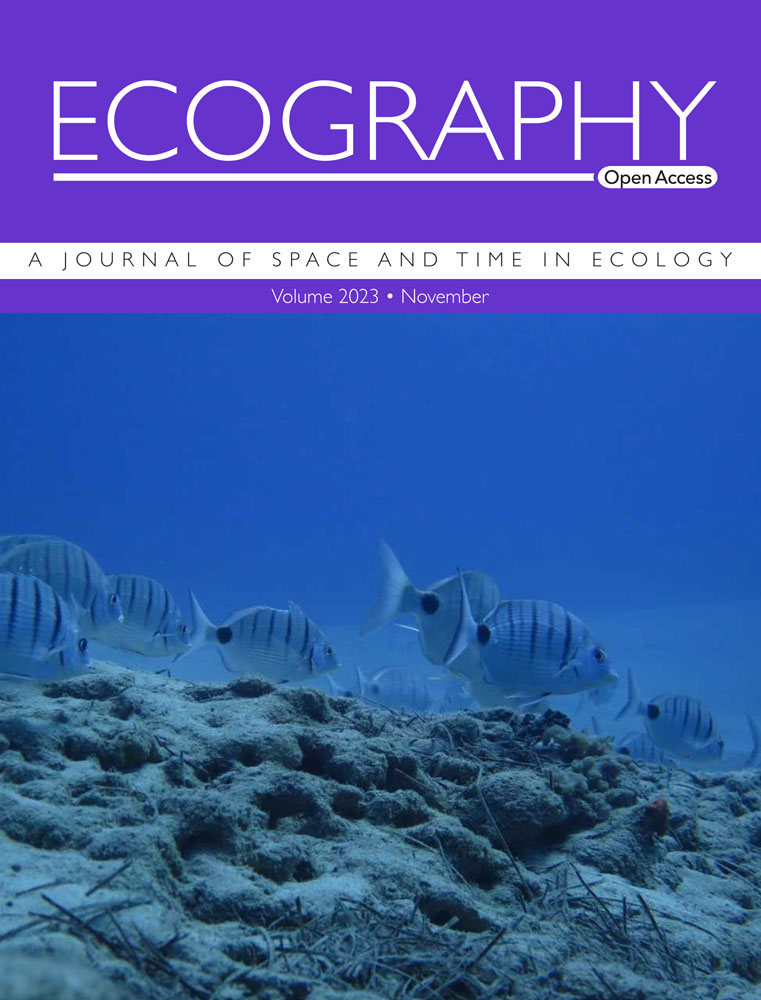Shape‐shifting in relative wing length of juvenile shorebirds: no evidence of developmental temperatures driving morphological changes
IF 5.4
1区 环境科学与生态学
Q1 BIODIVERSITY CONSERVATION
引用次数: 0
Abstract
Morphological changes concurrent with climate change are increasingly identified in birds, often through decreasing body size and increasing appendage size. Such changes could have thermoregulatory implications, through the improved surface area to body ratio they provide. Due to the role of bird wings in thermoregulation, wing length relative to body mass may be changing as another form of shape‐shifting, where increased relative wing length may facilitate increased heat loss as climates warm. We investigated changes in relative wing length on a dataset of nearly 20 000 juvenile shorebirds from 11 species over the past four decades, to determine changes in morphology and whether these are linked to developmental temperatures. Overall, across species, we found that relative wing length increased across the 43‐year study period in populations migrating to tropical northern Australia but not in those migrating to temperate southern Australia. Furthermore, we found that changes in relative wing length were not driven by immediate responses to high temperature at the breeding ground during juvenile growth. These results may suggest that relative wing length increases occur in shorebirds occupying already warm climates, where they might potentially be more thermally challenged under further warming, but that such changes are not occurring through plastic mechanisms during development.幼滨鸟相对翼长的形状变化:没有证据表明发育温度驱动形态变化
随着气候变化,鸟类的形态变化越来越多地被发现,通常是通过缩小体型和增加附属物的大小。这些变化可以通过改善表面积与身体的比例来调节体温。由于鸟类翅膀在体温调节中的作用,相对于体重的翅膀长度可能会以另一种形式发生变化,即随着气候变暖,相对翅膀长度的增加可能会促进热量损失的增加。在过去的40年里,我们研究了来自11个物种的近2万只幼年滨鸟的相对翅膀长度的变化,以确定形态学的变化以及这些变化是否与发育温度有关。总的来说,在43年的研究期间,我们发现在迁移到热带澳大利亚北部的种群中,相对翼长增加了,而在迁移到温带澳大利亚南部的种群中,相对翼长没有增加。此外,我们发现相对翼长的变化不是由幼鸟生长期间繁殖地对高温的直接反应驱动的。这些结果可能表明,在已经温暖的气候中,滨鸟的相对翅膀长度会增加,在进一步变暖的情况下,它们可能会受到更多的热挑战,但这种变化不是通过发育过程中的塑性机制发生的。
本文章由计算机程序翻译,如有差异,请以英文原文为准。
求助全文
约1分钟内获得全文
求助全文
来源期刊

Ecography
环境科学-生态学
CiteScore
11.60
自引率
3.40%
发文量
122
审稿时长
8-16 weeks
期刊介绍:
ECOGRAPHY publishes exciting, novel, and important articles that significantly advance understanding of ecological or biodiversity patterns in space or time. Papers focusing on conservation or restoration are welcomed, provided they are anchored in ecological theory and convey a general message that goes beyond a single case study. We encourage papers that seek advancing the field through the development and testing of theory or methodology, or by proposing new tools for analysis or interpretation of ecological phenomena. Manuscripts are expected to address general principles in ecology, though they may do so using a specific model system if they adequately frame the problem relative to a generalized ecological question or problem.
Purely descriptive papers are considered only if breaking new ground and/or describing patterns seldom explored. Studies focused on a single species or single location are generally discouraged unless they make a significant contribution to advancing general theory or understanding of biodiversity patterns and processes. Manuscripts merely confirming or marginally extending results of previous work are unlikely to be considered in Ecography.
Papers are judged by virtue of their originality, appeal to general interest, and their contribution to new developments in studies of spatial and temporal ecological patterns. There are no biases with regard to taxon, biome, or biogeographical area.
 求助内容:
求助内容: 应助结果提醒方式:
应助结果提醒方式:


